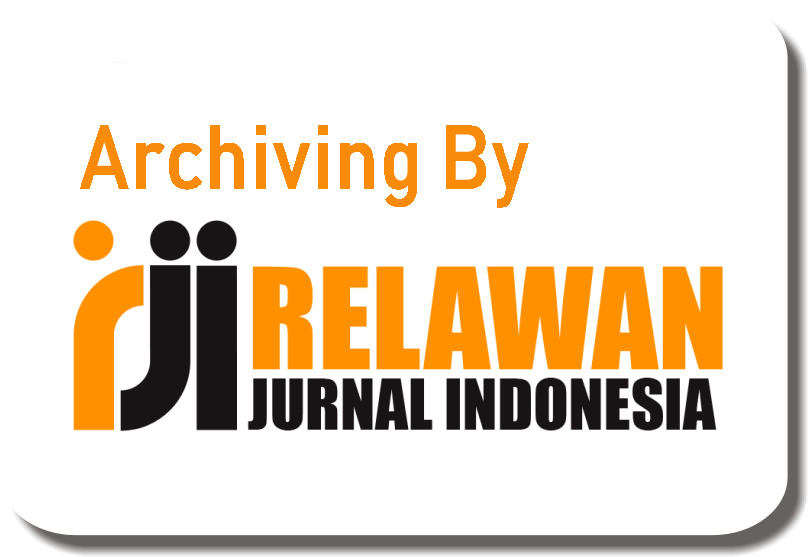Learning Motivation of Undergraduate Nursing Students with Student Centered Learning (SCL) Learning Methods
Abstract
Student-centered learning is student-centered learning. The application of student-centered learning in various universities has a diverse level of specialization in student-centered learning models and student motivation, so evaluating the application of learning models must be carried out in accordance with the needs of students and the applicable learning curriculum. Objective: This study aims to identify learning motivation in student-centered learning (SCL) of third-level nursing undergraduate students of STIKes Dharma Husada. Methods: This type of study uses an observational descriptive quantitative method with a sample of 82 respondents taken by purposive sampling technique. The instrument used was a learning motivation questionnaire in student-centered learning at STIKes Dharma Husada which referred to Cherniss and Goleman. Results: The results of the study seen from the frequency distribution showed that the motivation of level 3 nursing undergraduate students at STIKes Dharma Husada (67.1%) was in the medium category. In the aspect of motivation, 4 sub-variables, namely: Motivation to achieve something, Commitment, Initiative and Optimism are in the medium category. Student centered learning has 10 types of models. The first most popular student-centered learning model is the Role Play and Simulation model (41.5%) and the first least popular student centered-learning model is Small Group Discussion (34.1%). It is hoped that the study program nursing undergraduate can maintain the most in-demand model and evaluate and make the strategy of applying the student-centered learning model more attractive to the model that is not in demand.
Keywords
Full Text:
PDFReferences
Alit, D. M., & Tejawati, N. L. P. (2023). Smart Classroom : Digital Learning Generasi Z Dan Alpha. Transformasi Pendidikan Melalui Digital Learning Guna Mewujudkan Merdeka Belajar, 277–288.
Astuti, I. Y., Sudadio, S., & Sholih, S. (2018). Perbedaan Motivasi Belajar Warga Belajar Perempuan dan Laki-Laki dalam Mengikuti Pendidikan Kesetaraan Paket C. Journal of Nonformal Education and Community Empowerment, 2(1), 57–71. https://doi.org/DOI: 10.15294/pls.v2i1.23311
Attard, A., Iorio, E. Di, Greven, K., & Santa, R. (2010). Student Centred Learning: Toolkit for Students, Staff and Higher Education Institutions. The European Students’ Union. https://esu-online.org/wp-content/uploads/2017/10/SCL_toolkit_ESU_EI.compressed.pdf
Ayu, N. M. S., Ernawati, Safra, & Yunita. (2021). Pengaruh Metode Role Playing terhadap Motivasi Belajar Mahasiswa Prodi S1 Keperawatan pada Pembelajaran Laboratorium Keperawatan Jiwa. Jurnal Keperawatan STIKes Hang Tuah Tanjungpinang, 11(1), 1–6. https://jurnal.stikesht-tpi.ac.id/index.php/jurkep/article/view/105/104
Fitriyah, Y. (2022). Hubungan Motivasi Belajar dengan Keaktifan Diskusi selama SGD saat Pembelajaran Daring pada Mahasiswa Keperawatan di Unissula [Universitas Islam Sultan Agung Semarang]. https://repository.unissula.ac.id/26985/1/Ilmu Keperawatan_30901800199_fullpdf.pdf
Gagné, R. M. (1977). The conditions of learning and theory of instruction (3rd ed.). Holt, Rinehart and Winston.
Ghaffari, F., Mohammadi, S., Arazi, T., Arzani, A., & Rahimaghaee, F. (2021). Shedding light on the causes of academic procrastination among nursing students. Journal of Education and Health Promotion, 10(1), 181. https://doi.org/10.4103/jehp.jehp_1103_20
Indayani, E., Darmayanti, N., & Siregar, K. (2023). Pengaruh Model Pembelajaran Student Centred Learning (SCL) dan Teacher Centred Learning (TCL) terhadap Motivasi Belajar Siswa MTS ditinjau dari Jenis Kelamin. JIVA: Journal of Behaviour and Mental Health, 4(1), 66–80. https://doi.org/10.30984/jiva.v4i1.2531
Jasmin. (2020). Penerapan Model Discovery Learning terhadap Motivasi dan Hasil Belajar Siswa pada Materi Besaran dan Satuan MTS Muslimat NU Palangka Raya [Institut Agama Islam Negeri Palangkaraya]. http://digilib.iain-palangkaraya.ac.id/3199/1/Skripsi Jasmin - 1311120318.pdf
Jiang, J., Lu, Y., & Zhang, Q. (2020). Effects of the student-centered learning approach on online discussion behaviors and learning outcomes.
Jovanović, J., Gašević, D., Dawson, S., Pardo, A., & Mirriahi, N. (2017). Learning analytics to unveil learning strategies in a flipped classroom. The Internet and Higher Education, 33, 74–85. https://doi.org/10.1016/j.iheduc.2017.02.001
Marlina. (2019). Social Loafing Mahasiswa UNNES dan Faktor-Faktor yang Mempengaruhi Dalam Mengerjakan Tugas Kelompok.
Morgan, C. T., & King, R. A. (1975). Introduction to Psychology (5 ed.). McGraw-Hill.
Mujiono. (2021). Determinant factors self-motivation of Riau University students. JURNAL PAJAR (Pendidikan dan Pengajaran), 5(2). https://doi.org/10.33578/pjr.v5i2.8211
Nabila, L. N., Utama, F. P., Habibi, A. A., & Hidayah, I. (2023). Aksentuasi Literasi pada Gen-Z untuk Menyiapkan Generasi Progresif Era Revolusi Industri 4.0. Journal of Education Research, 4(1), 28–36. https://doi.org/10.37985/jer.v4i1.113
Nawangwulan, S. (2021). Upaya Meningkatkan Motivasi dan Hasil Belajar Mahasiswa dengan Metode Roleplaying pada Mata Kuliah Manajemen Pelayanan Kesehatan dan Rumah Sakit (MPKRS). Indonesian Journal of Hospital Administration, 4(1), 12–19. https://doi.org/10.21927ijhaa.2021.4(1).12-19
Nugraheni, E. (2007). Student Centered Learning dan Implikasinya terhadap Proses Pembelajaran. Universitas Terbuka.
Panggabean, S. (2021). Konsep Student Center Learning Dan Teacher Center Learning. In A. Munandar (Ed.), Sistem Student Centered Larning dan Teacher Center Learning (hal. 1–12). CV. Media Sains Indonesia. http://eprints.poltekkesjogja.ac.id/10956/1/BUKU Digital Sistem Student Center Learning Dan Teacher Center Learning_Atik Badiah_Tahun 2021.pdf
Riadi, M. (2022). Model Pembelajaran SCL (Student Centered Learning). KajianPustaka.com. https://www.kajianpustaka.com/2021/05/model-pembelajaran-scl-student-centered-learning.html
Slavin, R. . E. (1995). Cooperative learning: Theory, research, and practice (2nd Edition (2nd ed.). Allyn and Bacon.
Travers, R. M. W. (1977). Essentials of learning : the new cognitive learning for students of education (4th ed.). New York : Macmillan ; London : Collier Macmillan.
Ulimaz, A. (2015). Meningkatkan Hasil Belajar Siswa Kelas X pada Konsep Keanekaragaman Hayati Menggunakan Model Pembelajaran Inkuiri. Konstruksivisme, Jurnal Pendidikan dan Pembelajaran, 7(1), 61–66. https://doi.org/https://doi.org/10.35457/konstruk.v7i1.26
W.S Winkel. (1989). Psikologi Pengajaran. Gramedia.
Yani, N., & Aulia, F. (2020). Peran Gender Dalam Menentukan Motivasi Akademik. Jurnal Riset Psikologi, 2020(4), 1–12. https://doi.org/http://dx.doi.org/10.24036/jrp.v2020i4.10129
DOI: https://doi.org/10.31004/jele.v10i1.662
Refbacks
- There are currently no refbacks.
Copyright (c) 2025 Nur Indriyani, Suparni, Yunita Fitri Rejeki, Annisa Nur Erawan, Trisno Subekti

This work is licensed under a Creative Commons Attribution-ShareAlike 4.0 International License.



